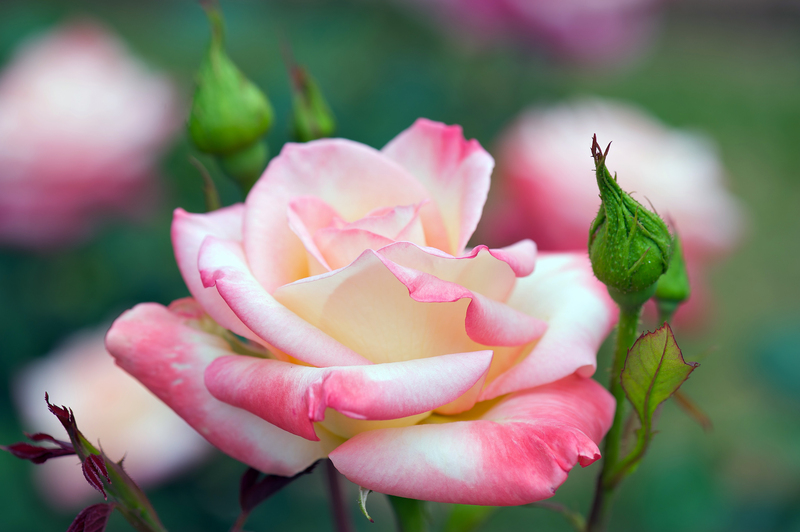Smart Approaches for Weed Prevention
Posted on 08/06/2025
Sure! Here's your article:
---
Weed prevention is a essential component of maintaining a healthy and thriving garden or landscape. Weeds compete with desirable plants for nutrients, water, and sunlight, which can stifle the growth and beauty of your garden. Implementing smart weed prevention strategies can save you time, money, and effort in the long run. In this article, we'll delve into practical, effective approaches to keep those unwanted invaders at bay.
Mulching is one of the most effective methods for preventing weeds. By covering the soil with a thick layer of mulch, you create a barrier that blocks sunlight from reaching weed seeds. This inhibits their growth and makes it more difficult for weeds to establish themselves.
Types of Mulch:
- Organic: Straw, wood chips, leaves, and grass clippings.
- Inorganic: Landscape fabric, black plastic, and gravel.
Organic mulches often break down over time, enriching the soil with nutrients, while inorganic mulches last longer but don't improve soil health.
Planting ground covers can be a great way to suppress weed growth. Ground covers are low-growing plants that spread quickly to form a dense mat, reducing the space available for weeds.
Popular Ground Covers:
- Creeping Thyme
- Periwinkle
- Clover
- Sedum
Choosing the right ground cover depends on your climate and specific gardening needs. They can also add aesthetic appeal to your garden.
Crowded plants create an environment where weeds can easily establish themselves. By spacing plants properly, you reduce the competition for resources and create a less favorable environment for weed growth.
Guidelines for Spacing:
- Follow recommendations on plant labels.
- Consider mature plant size when spacing.
- Group plants with similar spacing needs together.
Sometimes, there's no substitute for the tried and true methods of hand weeding and hoeing. Regularly inspecting your garden and promptly removing weeds before they can set seed is crucial for long-term control.
Hand Weeding Tips:
- Weed after it rains when the soil is soft.
- Use weeding tools to get roots out.
- Dispose of weeds properly to prevent reseeding.
Hoeing Tips:
- Choose a sharp hoe.
- Hoe when the soil is dry.
- Be consistent and hoe shallowly to avoid disturbing plant roots.
Pre-emergent herbicides can be an effective option for large areas prone to weed infestations. These chemicals prevent weed seeds from germinating and establishing.
Usage Tips:
- Apply before weed seeds start germinating.
- Follow manufacturer instructions.
- Combine with other weed prevention methods for best results.
Solarization is an organic method that uses the sun's heat to kill weeds and their seeds. By covering soil with clear plastic during the hottest part of summer, the heat trapped under the plastic will sterilize the soil.
Steps for Solarization:
- Till the soil and remove debris.
- Water the soil well.
- Cover with clear plastic and seal the edges.
- Leave in place for 4-6 weeks.
Pros:
- Reduces competition for resources, fostering healthier plants.
- Decreases the need for chemical herbicides.
- Saves time and labor in the long run.
- Enhances the visual appeal of your garden.
Cons:
- Some methods, like mulching and solarization, can be labor-intensive initially.
- Inappropriate use of herbicides can harm desirable plants.
- Organic mulches may need frequent replenishment.
1. **Be proactive, not reactive.** Regularly inspect your garden and act quickly.
2. **Use a combination of methods.** Relying on only one method may not be effective.
3. **Monitor weather conditions.** Weed after rain and apply herbicides in optimal conditions.
4. **Keep the soil healthy.** Healthy soil encourages strong plants that outcompete weeds.
- Mulching and ground covers are both aesthetically pleasing and functional.
- Proper plant spacing is vital for reducing weed competition.
- Regular hand weeding and hoeing can't be overlooked.
- Pre-emergent herbicides and solarization can be effective for broader areas.
- Consistency and combining methods result in the best weed prevention.
Smart approaches for weed prevention involve a combination of techniques tailored to your specific gardening needs. By understanding and implementing these methods, you can create a thriving, weed-free garden. Whether you choose mulching, ground covers, proper plant spacing, manual weeding, herbicides, or solarization, the key is to be proactive and consistent. With a well-thought-out plan, you can enjoy a healthy, beautiful garden with minimal weed intrusion.
---
---
Understanding the Importance of Weed Prevention
Weed prevention is a essential component of maintaining a healthy and thriving garden or landscape. Weeds compete with desirable plants for nutrients, water, and sunlight, which can stifle the growth and beauty of your garden. Implementing smart weed prevention strategies can save you time, money, and effort in the long run. In this article, we'll delve into practical, effective approaches to keep those unwanted invaders at bay.

1. Mulching
Mulching is one of the most effective methods for preventing weeds. By covering the soil with a thick layer of mulch, you create a barrier that blocks sunlight from reaching weed seeds. This inhibits their growth and makes it more difficult for weeds to establish themselves.
Types of Mulch:
- Organic: Straw, wood chips, leaves, and grass clippings.
- Inorganic: Landscape fabric, black plastic, and gravel.
Organic mulches often break down over time, enriching the soil with nutrients, while inorganic mulches last longer but don't improve soil health.
2. Ground Covers
Planting ground covers can be a great way to suppress weed growth. Ground covers are low-growing plants that spread quickly to form a dense mat, reducing the space available for weeds.
Popular Ground Covers:
- Creeping Thyme
- Periwinkle
- Clover
- Sedum
Choosing the right ground cover depends on your climate and specific gardening needs. They can also add aesthetic appeal to your garden.
3. Proper Plant Spacing
Crowded plants create an environment where weeds can easily establish themselves. By spacing plants properly, you reduce the competition for resources and create a less favorable environment for weed growth.
Guidelines for Spacing:
- Follow recommendations on plant labels.
- Consider mature plant size when spacing.
- Group plants with similar spacing needs together.
4. Hand Weeding and Hoeing
Sometimes, there's no substitute for the tried and true methods of hand weeding and hoeing. Regularly inspecting your garden and promptly removing weeds before they can set seed is crucial for long-term control.
Hand Weeding Tips:
- Weed after it rains when the soil is soft.
- Use weeding tools to get roots out.
- Dispose of weeds properly to prevent reseeding.
Hoeing Tips:
- Choose a sharp hoe.
- Hoe when the soil is dry.
- Be consistent and hoe shallowly to avoid disturbing plant roots.
5. Pre-emergent Herbicides
Pre-emergent herbicides can be an effective option for large areas prone to weed infestations. These chemicals prevent weed seeds from germinating and establishing.
Usage Tips:
- Apply before weed seeds start germinating.
- Follow manufacturer instructions.
- Combine with other weed prevention methods for best results.
6. Solarization
Solarization is an organic method that uses the sun's heat to kill weeds and their seeds. By covering soil with clear plastic during the hottest part of summer, the heat trapped under the plastic will sterilize the soil.
Steps for Solarization:
- Till the soil and remove debris.
- Water the soil well.
- Cover with clear plastic and seal the edges.
- Leave in place for 4-6 weeks.
Pros and Cons of Weed Prevention Methods
Pros:
- Reduces competition for resources, fostering healthier plants.
- Decreases the need for chemical herbicides.
- Saves time and labor in the long run.
- Enhances the visual appeal of your garden.
Cons:
- Some methods, like mulching and solarization, can be labor-intensive initially.
- Inappropriate use of herbicides can harm desirable plants.
- Organic mulches may need frequent replenishment.
Tips for Effective Weed Prevention
1. **Be proactive, not reactive.** Regularly inspect your garden and act quickly.
2. **Use a combination of methods.** Relying on only one method may not be effective.
3. **Monitor weather conditions.** Weed after rain and apply herbicides in optimal conditions.
4. **Keep the soil healthy.** Healthy soil encourages strong plants that outcompete weeds.

Takeaways
- Mulching and ground covers are both aesthetically pleasing and functional.
- Proper plant spacing is vital for reducing weed competition.
- Regular hand weeding and hoeing can't be overlooked.
- Pre-emergent herbicides and solarization can be effective for broader areas.
- Consistency and combining methods result in the best weed prevention.
Conclusion
Smart approaches for weed prevention involve a combination of techniques tailored to your specific gardening needs. By understanding and implementing these methods, you can create a thriving, weed-free garden. Whether you choose mulching, ground covers, proper plant spacing, manual weeding, herbicides, or solarization, the key is to be proactive and consistent. With a well-thought-out plan, you can enjoy a healthy, beautiful garden with minimal weed intrusion.
---



